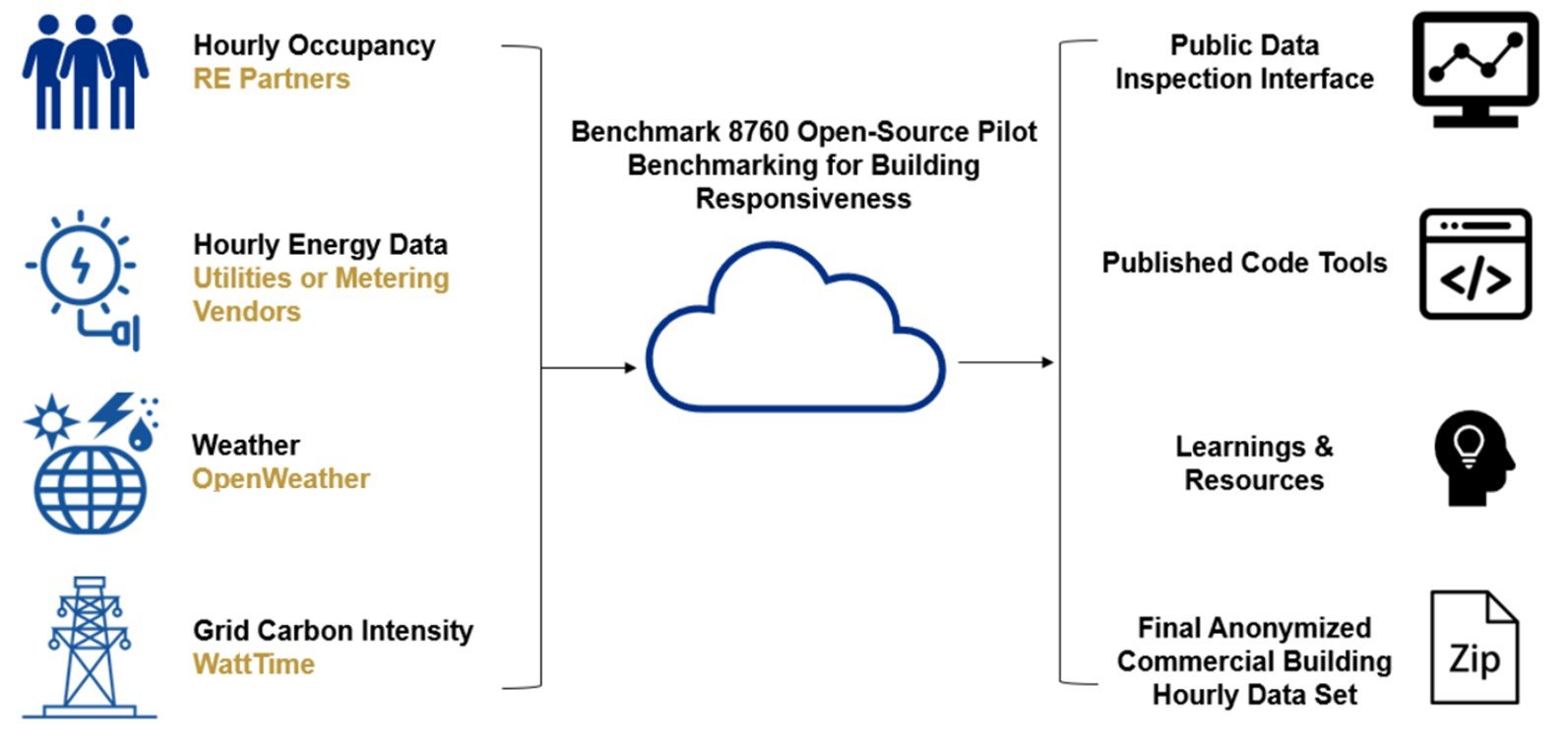Spotlight on Innovation: JB&B
Manhattan

Benchmarking and Building Performance Standards: Seeding the Evolution
A study aimed at demonstrating how collecting integrated hourly data is both feasible and a crucial input to measure and assess building performance.
“The future of building benchmarking and performance standards is hourly data.”
– Charlotte Matthews
Problem
New York State has several laws in place to drive building performance improvements. Unfortunately, they don't require the collection of key data such as occupancy information or energy use patterns.
Additionally, current assessment methods overlook the variable greenhouse gas emissions intensity of electricity consumption at different times of day. As a result, opportunities for occupancy-based efficiency, load shifting, and other essential strategies for managing carbon emissions are often missed.
Proposed Solution
Jaros, Baum & Bolles (JB&B) Consulting Engineers LLP developed an innovative proof-of-concept benchmarking platform, a cloud-based data warehouse called “Benchmark 8760.” The team then used it to study the feasibility and scalability of collecting hourly occupancy data (while respecting privacy concerns) from a test set of ten New York City commercial buildings.
In addition to occupancy data, “Benchmark 8760” securely captures hourly energy use, grid carbon intensity, and weather data. Benchmark 8760 takes a crucial step in advancing New York’s ability to fully understand and drive the adoption of grid-interactive efficient buildings.
Benchmark 8760 Concept Diagram

Project Timeline
Initiated: December 2020
Completed: July 2023
Goals and Objectives
The project utilized the newly created Benchmark 8760 platform to accomplish a range of objectives, including:
1.
Testing the viability of securely and affordably collecting this information for use in building performance assessment methods.
2.
Publishing the results of data collection on a publicly available dashboard.
3.
Freely sharing all project resources, including the data warehouse and integration source code, data extraction techniques, academic papers, and industry reports.
4.
Engaging the industry with the idea of using hourly data in building performance assessments.
Project Results
The Benchmark 8760 Initiative successfully achieved its objectives of developing a cloud-based data platform to test the feasibility of using hourly data for benchmarking and building performance standards. View the platform ![]() to review the hourly buildings data collected, and to see how participating buildings appear to be performing based on that data. Through the project, the team demonstrated that collecting accurate, secure, and privacy-protected hourly data is possible, laying the groundwork for advancements in building performance evaluation methods.
to review the hourly buildings data collected, and to see how participating buildings appear to be performing based on that data. Through the project, the team demonstrated that collecting accurate, secure, and privacy-protected hourly data is possible, laying the groundwork for advancements in building performance evaluation methods.
Lessons Learned
Occupancy-counting is feasible at scale. Access JB& B’s report ![]() on people-counting integrations.
on people-counting integrations.
- Hourly building electricity and occupancy data can be extracted and stored in a vendor-neutral manner.
- Hourly occupancy data can be captured affordably using existing or low-cost infrastructure.
- Capturing hourly occupancy data does not necessarily infringe on personal privacy.
People counting devices that do not capture personally identifiable information (PII) are readily available to the commercial market.
- Hourly occupancy data can be securely stored and shared with a cloud-based data platform.
All occupancy counting solutions deployed in Benchmark 8760 participating properties meet industry cyber security standards and the individual requirements of each building’s IT team.
Multiple hourly data sources can be collected and integrated into one platform.
- Data from diverse hardware solutions and building typologies can be stored in a common cloud-based platform.
Utility meters, building meters, occupancy counters, and grid data can be combined to create a foundation for future building benchmarking
- It is possible to calculate hourly average region-specific grid emissions data for benchmarking.
Benchmark 8760-contributor, WattTime, calculated NYISO zone level average hourly emissions. Zone level emissions better reflect the grid emissivity where the buildings are located, and average emissivity can be used for carbon accounting, rather than marginal emissions data.
Technical developments from this project are able to be adopted by existing benchmarking platforms.
- It is technically feasible to evolve existing benchmarking platforms like ENERGY STAR Portfolio Manager to use hourly building data.
Portfolio Manager has a flexible architecture and adding new kinds of data, such as occupancy or grid emissions intensity, is achievable.
Download JB&B’s full final report here[PDF].
Key Outcomes
To promote best practices and knowledge exchange from the initiative, JB&B has created a LinkedIn group ![]() where building owners, technology providers, policy stakeholders, research organizations, and academics can engage. The source code
where building owners, technology providers, policy stakeholders, research organizations, and academics can engage. The source code ![]() for the cloud-based data platform was released to the public through the open-source platform, GitHub, to foster further collaboration and innovation. Following the completion of the proof-of-concept platform, JB&B aims to expand the platform to prove scalability and to include additional building types.
for the cloud-based data platform was released to the public through the open-source platform, GitHub, to foster further collaboration and innovation. Following the completion of the proof-of-concept platform, JB&B aims to expand the platform to prove scalability and to include additional building types.
Resources
The following links are for building owners, policymakers, consulting engineers, equipment vendors, and others interested in learning more about the project and the lessons learned through JB&B’s efforts.
Read about other building carbon decarbonization solutions.
Visit NYSERDA’s Innovative Market Strategies program page.

